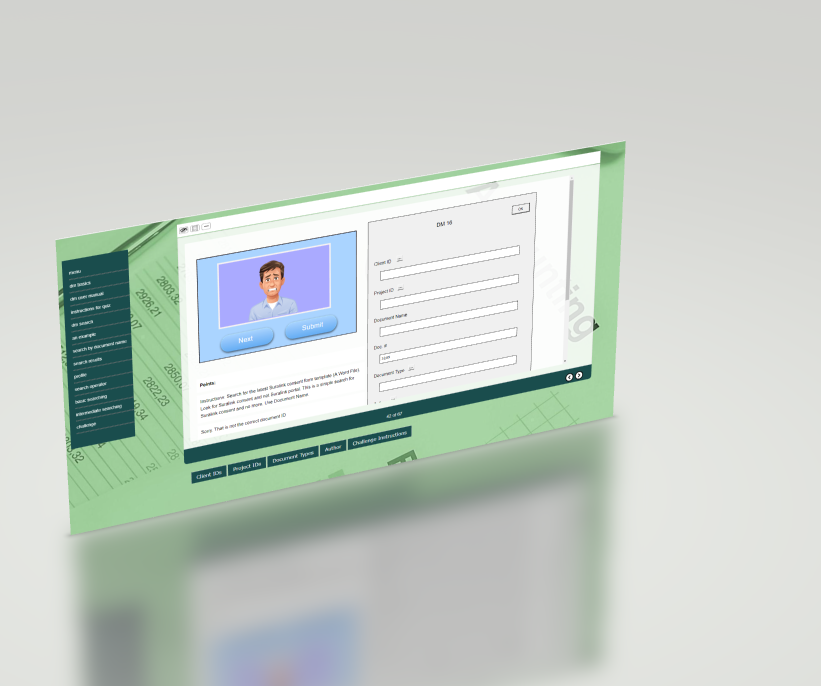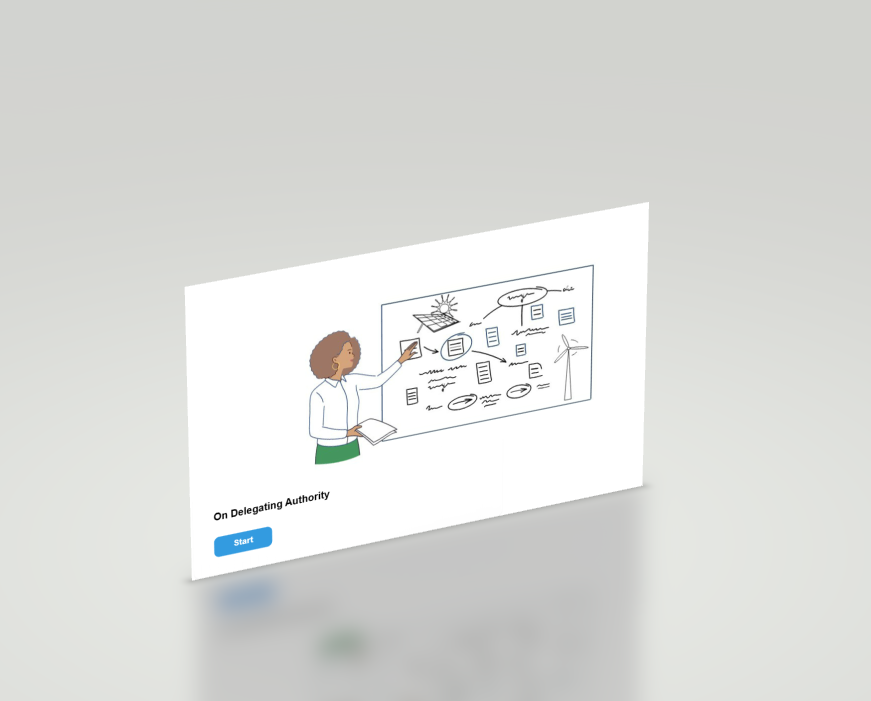Introduction
The thrill of learner experience design is in finding the tools, techniques and strategies to engage learners with designs that go well beyond presentations and puzzles. Often learners must solve problems to achieve a performance or academic goal and it’s in the nature of the problem that we find the best-suited strategies.
I use the term ‘problem’ very broadly to encompass many different things. The late David H. Jonassen presented a typology of problems in his work, ‘Toward a design theory of problem solving’1. He wrote that ‘learning to solve problems is too seldom required in formal educational settings.’ Even outside of formal education, we’re often asked to create presentations with assessments that cover some area of compliance whether it be data security, diversity in the workplace, or health and safety. But often we’re challenged with a training problem that can’t be addressed without engaging learners with the problem.

The Challenge
Our challenge is to develop the right thing that gets the best results with the least expenditure of time and money. We need strategies that are well-suited to the problem. Seasoned designers have a wide repertoire of strategies, templates, and models that can be used given a level of learning, type of learning, and type of problem. However, this industry sees new entrants every year2 and the casual developer (an instructor, for example) may not have uncovered all of their options or know when to apply them.
What are the activity types that provide a situation, a problem to solve, and an activity that elicits student performance and constructive feedback? What are the activities that help designers and instructors engage students at a level that involves challenge, activity and feedback. More generally, what activities promote higher order thinking that allow us to integrate component skills into a coordinated response that enables us to complete tasks, analyze data, solve problems, and create things?
We have limited time and money. The quick solution to any higher order learning objective is to simply talk about it, present on it, show a video, hear from an expert, ask some questions, and then, forgive me, throw the learners in the deep end. Moreover, if we take the time to create an activity that makes the learner do things we may ask ourselves: was the result commensurate with the time and effort? In other words, given a learning objective and educational goal, the online instructor or trainer might wonder about the return of investment for a given strategy. For example, an instructor may ask ‘Is it worth my time to create an activity rather than a multiple choice test?’ And what would that activity be?
Our industry doesn’t make it easy. It turns out that the industry has many names for things. There is no standard taxonomy with precise attributes. And yet we can start with a few widely recognizable terms: Interactive case study. Decision-making scenario. ShortSims3. Simulation. Branching interaction. Interactive Non-Fiction.

Matching Strategies to the Problem
Our first clue that we need more than a presentation is that we’re asking learners to do more than just recall. We recognize a need to engage learners’ ability to analyze, apply, synthesize, evaluate, make decisions, create things – all of which requires thinking beyond simple recall. Of course, the learner may need to recall the right fact, principle, concept, or rule that is useful in a given situation. But it is the application of that information that is the key. We recognize that we need a story, a context, possibly varying levels of difficulty, and possibly a challenge in the form of incomplete information, confusion and stress.
So what’s the solution? The solution is suggested by the problem.
We can be guided by the nature of the problem that we want learners to solve or engage in. M. David Merrill tells us that ‘effective instruction is problem-centered’. Robert Gagné asserted that the point of education was to help learners become better problem solvers. Michael Allen emphasizes the importance of context (‘a problem-solving environment’) and challenge. Richard Mayer wrote that ‘a major challenge of education is improving students’ minds–a goal that is reflected in people being able to solve novel problems they encounter’.
In ‘Toward a Design Theory of Problem Solving’, David H. Jonassen creates a typology of problems – a useful tool that might help in the selection of instructional activities to promote problem solving.
Categorizing Problems
David Jonassen gave us a way to categorize problems based on problem variation. Does the problem have multiple solutions or only one? How many steps are included in the solution? Does the problem solution draw from multiple principles, concepts, or even disciplines? Does it require research beyond the content offered in a program of study? Is the problem domain specific – can it only be solved by learners who are schooled in a specific area of study — or is it general? Do learners need varying stages of support or scaffolding as they engage in the problem?
If we’re tackling one aspect of the problem, we can think of a key principle from ‘How Learning Works’ 3. Loosely, learners need practice on component skills and then practice with integrating them. Is our learning objective focused on one component skill or does it involve integration of multiple skills? If the component skill is simple enough, we might prescribe an activity like a word problem or matching type of exercise. If we engage students in a synthesis of skills, we’re going to need something more – something that has story (context) and multiple challenges. Jonassen recommends embedding instruction in some authentic context. Context is also a key element to the CCAF model.
Now we’re in the territory of ShortSims (generically, simple sims), decision making scenarios, interactive non-fiction, interactive case studies and other forms of interactions that place learners in realistic settings, challenge them, and make them do things.

One way of rationalizing the design and development time relates to the complexity of thinking and acting …and the complexity of the problem.
In a ShortSim the learner is presented with choices. The choices can cause the narrative to branch or simply advance the narrative in a linear progression. Making better choices might cause the learner to recall past learning, read and analyze information while looking for clues. The learner might wonder ‘Is this an instance of, for example, the unconscious bias that I’ve been told about? If I make the wrong choice, am I compromising data security, risking my safety, … making my supervisor unhappy?’
A ShortSim can engage the learner in some pretty advanced stuff with the clever use of graphics, text and choices.

that walks designers through the process of planning and producing
a simple decision-making simulation. Full reference below
Further down the continuum of simulations, our learning objective might require the learner to make decisions in an environment that includes many variables. The underlying model might not be a finite set of choices but a complex interplay of multiple variables. The activity might require a coordinated, intelligent response to an infectious disease outbreak, for example. The underlying model might be the SEIR model, which represents a population that is susceptible to a specific disease, exposed, infected and partly recovered. The learning program might vary the number of treatment days, incubation period, contacts per day, and fatality rate. The learner might need to observe the data and then prescribe a response. The computer environment can present one scenario from a nearly infinite number of possible scenarios.
The choice of one strategy over the other can relate to the complexity of the problem we are wanting learners to solve. Jonassen helps us here. The level of realism and variability of the problem will require increasingly more sophisticated (and time-consuming) designs.
Logical problems that require students to recall information might suggest a word game, a crossword puzzle, or a multiple-choice quiz.
Algorithmic problems require learners to progress through a series of procedural steps and this might suggest a ShortSim or decision-making scenario.
Story problems with embedded procedures might suggest word problems or interactive fiction or non-fiction that houses word problems in a longer narrative.
Rule-Using Problems and Decision-Making problems that involve defined procedures and methods can be handled with ShortSims, other forms of interactive branching and decision-making scenarios, and role-playing.
Trouble-shooting problems can begin with interactive trouble-shooting guides or low fidelity simulations but when the problem state has variation and complexity then a virtual lab or full-blown simulation might be needed that can a) generate variable states, b) represent those states to the learner in the form of dials, instruments, changes in the environment, changes in characters, etc., c) elicit learner response and d) and provide feedback in the form of dialog, pop-ups, and/or changes in the environment.
Case-analysis problems can be presented through problem-based learning scenarios, historical case analyses, interactive case studies in which the learner is presented with case descriptions and data and asked to accomplish a goal.
Additional forms of problems in Jonassen’s typology include design problems and dilemmas. The types of problems can certainly be expanded to include additional categories of problems: for example, strategic performance problems that involve business simulations and strategy games. And the list goes on …. all beyond presentations and puzzles.
Conclusion
After the designer has looked at the learner, the learner’s environment, the performance goal, the gap analysis, etc., the performance might be whittled down to a problem type that the learner may need to solve. The problem can range from providing performance feedback to evaluating equations, from delegating authority to applying statistics to improve production. The type of program often suggests the treatment. The fun of being a learning experience designer is in exploring strategies and applying them where appropriate in a cost-effective, time-saving manner.
In past articles, I have covered some of these strategies. You’re welcome to visit them.
References
1Jonassen, D.H. Toward a design theory of problem solving. ETR&D 48, 63–85 (2000). https://doi.org/10.1007/BF02300500
2In a 2021 survey held by Devlin Peck (n=615) (Instructional Designer Full Report 2021 | Devlin Peck), 44% of the respondents had 0 – 3 years’ experience.
3Aldrich, Clark (2020) ShortSims, CRC Press
4 Ambrose, S., Bridges, M., & Lovett, M. (2010). How learning works: 7 research-based principles for smart teaching. John Wiley and Sons.)
